Then let us pray that come it may,
(As come it will for a’ that,)
That Sense and Worth, o’er a’ the earth,
Shall bear the gree, an’ a’ that.
For a’ that, an’ a’ that,
It’s coming yet for a’ that,
That Man to Man, the world o’er,
Shall brothers be for a’ that.
(From: “A Man’s a Man for a’ That” by Robert Burns)
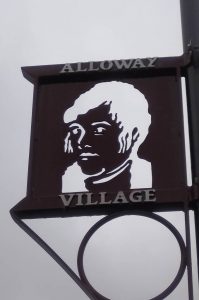
This is a slightly belated birthday post for Robert Burns, the beloved National Poet of Scotland. Born in Alloway on January 25, 1759, the Bard of Ayrshire, affectionately known as Rabbie started his career as a tenant farmer like his father and later in life became an excise collector in Dumfries. Throughout most of his life, however, whatever job he held, Burns was a poet and a poet in a particularly interesting time in Scotland (and Europe in general).
The Scotland of Burns’s time was that of a national identity crisis. After merging Scotland’s crown into Great Britian with James I in 1603, the British and Scottish Parliaments merged in 1707, resulting in a period in which the Scots were facing an identity crisis. How do they retain their distinctive culture amidst the English hegemony overtaking the nation? The Scots language was fading, morphing into strongly-accented English, traditional dress was increasingly frowned upon in polite society and many of the cultural songs, poems and folk traditions were fading, giving way to English traditions. Burns became a man in a time when what it meant to be a Scotsman was in question.
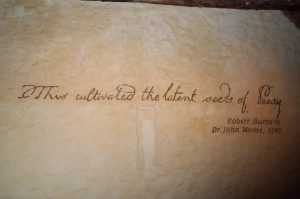
Burn’s poetry started off commonly enough. When he was 15, he fell in love and began writing love poetry, but his repertoire soon expanded into pastorals about the farm life he grew up in and nature in general (noted particularly in his famous “Ode to a Mouse”)
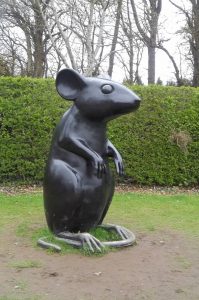
and in doing so became a pioneer of the Romantic movement. Burns is now often studied among the likes of Wordsworth, Coleridge and Keats. Burns was more than a prolific Romantic poet, however. He was also a champion of Scottish culture, eschewing more widely-read English and writing most of his poems in the Scots language or a Scottish dialect. In 1786 Burns published Poems, Chiefly in the Scottish Dialect to a first edition of 612 copies, but it became popular and was run in a section edition in Scotland’s capital, Edinburgh.
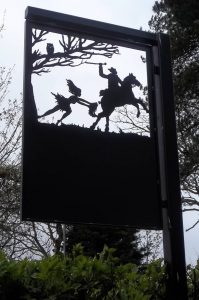
This success allowed him to travel throughout Scotland (though his travels were, at least in part, to gather information about crops) and he increasingly saw himself as “Scotia’s bard.” He published his narrative masterpiece Tam o’ Shanter in 1788, but after that he spent the rest of his poetic career using his travels to collect Scottish folk songs and poems that were quickly becoming lost. He contributed two more large collections of traditional songs and poetry in his lifetime: the Scots Musical Museum and A Select Collection of Scottish Airs.
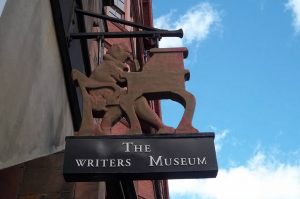
Burns was charismatic and extremely popular during his lifetime, both in literary circles, particularly in Edinburgh, and also throughout the country, hailed as a champion of traditional Scottish culture, including traditional dress (i.e. kilts; though it is often argued that Burns himself is unlikely to have worn one because he was from the Lowlands and kilts are more a tradition of the Highland clans). Five years after his early death in 1796 (he was 37), a group of friends gathered to celebrate his life and accomplishments, calling it the Burns Supper. The tradition continued among the friends for many years, but Burns’ popularity in Scotland, Great Britain and throughout the world grew, morphing from a group of friends gathering to an international celebration. The date changed from July 21st (the date of Burns’ death) to his birthday, January 25th, presumably to make it more a celebration of his life (though also, possibly, because the traditional Burns Supper is full of heavy, warm, rich foods that are much more palatable on a winter’s night). Burns is a highly respected cultural and literary figure and his influence on groups and individuals worldwide (he has the 3rd highest number of statues across the glob of any non-religious figure after Queen Victoria and Christopher Columbus) is quite possibly unparalleled.

Should you like to commemorate the poetry and life of Rabbie Burns with your own (albeit belated) Burns Night, you can do so in any number of ways. Bagpipe music would be a delightful, traditional accompaniment. You can also settle in with a warming glass of whisky (in Scotland, it’s just referred to as whisky, without the “e”, though we call it Scotch, stateside). You can also read a collection of Burns’ work (ideally out loud to others). There are many delicious options for hosting a Burns Supper delineated here (even if haggis isn’t your particular bag). But if you’d prefer to settle in for a Burns Night of reading books that take place in Scotland and celebrate a modern version of the culture that Burns sought to preserve, here is a selection of Scottish series to help you out:
 Inspector Rebus series by Ian Rankin
Inspector Rebus series by Ian Rankin
Multiple Edgar Award winning Edinburgh native Rankin has written John Rebus to be a complex, flawed character who is immediately intriguing, but the city of Edinburgh is almost as much a character as Rebus. Rankin’s mysteries are taught and fast paced, but you’ll also get a little literary tour in his prose as well. My favorite is The Falls, but you can also start with his first book, Knots and Crosses.
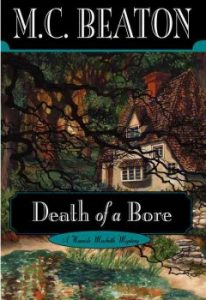 Hamish Macbeth series by M. C. Beaton
Hamish Macbeth series by M. C. Beaton
The beloved bachelor “bobby” (police officer) is the star of the long-running Hamish Macbeth series, sharing a name with a famed Scottish King and “The Scottish Play.” Beaton reportedly spent some time in the north of Scotland and found the Highlands captivating, so she decided to set a classic mystery series in that beautiful setting. The series titles are usual ripe with wonderful puns, like Death of a Bore, so feel free to pick one you like and tuck in.
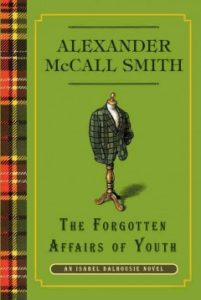 Isabel Dalhousie series by Alexander McCall Smith
Isabel Dalhousie series by Alexander McCall Smith
Though he was born in what is now Zimbabwe, McCall Smith has several ties to Scotland where he earned his Ph.D in Law and serves as a Medical Law Professor Emeritus at the University of Edinburgh where his expertise lies in bioethics. We know him better as the prolific author of several well-loved series including the No. 1 Ladies’ Detective Agency, 44 Scotland Street and the Isabel Dalhousie (also known as the Sunday Philosophy Club) mysteries. This series often has delightfully philosophical titles like The Forgotten Affairs of Youth and promise a classic cozy with a strong Scottish flair.
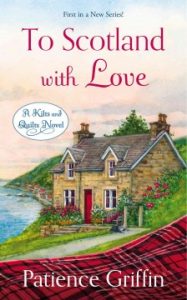 Kilts and Quilts series by Patience Griffin
Kilts and Quilts series by Patience Griffin
While there are many classic romance “bodice rippers” (for which you can get great reviews from Kelley in The Romance Garden features here on the Free For All) that take place in Scotland with tartan-strewn covers, this is a less intense series that is more about second chances and healing hearts in a tiny, rural Scotland town. This RITA award-winning series full of charm and hope, starts with To Scotland with Love, but the series is linked by the town and not necessarily by the main characters, so you can start anywhere and still enjoy them.
Till next week, dear readers, let’s all “take a cup o’ kindness yet, for days of auld lang syne.”
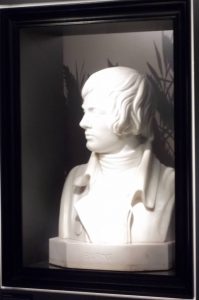
*All photos in this post (except the book covers) were taken in 2011 during your friendly Saturday blogger’s trip to Scotland.
